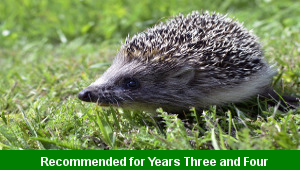Lesson Four – Whale Watching

This English teaching pack for Key Stage Two gets the children to model how to select and use the correct punctuation marks to convert from reported to direct speech in sentences about whales related to a narrative story.
The class can suggest reasons as to why characters might act and speak in different ways in a story to show their actions and feelings.
Download this teaching pack including a lesson plan, classroom activities and an interactive presentation to teach the children to model how to select and use the correct punctuation marks to convert from reported to direct speech in sentences about whales related to a narrative story
Activities in this teaching pack include a set of differentiated worksheets to add speech marks to correctly punctuate different sentences related to a story about whales for support ability levels and use the correct punctuation to convert from reported to direct speech sentences for core and extension ability levels.
The interactive presentation gets the children to explore how to use the correct punctuation to convert from reported to direct speech sentences about whales.
This lesson is part of an English scheme of work to get the children to explore how authors use dialogue to illustrate the actions and thoughts of story characters and narrate plot events. There are teaching activities for shared learning, differentiated worksheets to support independent learning and interactive presentations to introduce concepts and key skills.
-

Rounding Hundreds
Explain and model how to round some different numbers to the nearest hundred based on the place values of the digits in each number
-

Rounding Tens
Identify and record how to round some different numbers to the nearest ten based on the place values of the digits in each number
-

Classic Animal Stories
Investigate the structure and content of classic works of fiction by significant authors with animals as the main characters
-

Cities, Towns and Villages
Research and present the history of a range of different buildings and people that are part of the local community using a school exhibition
